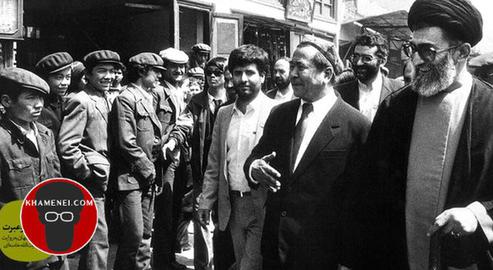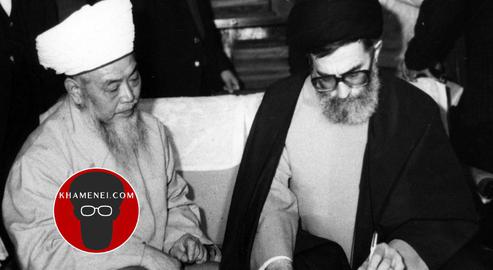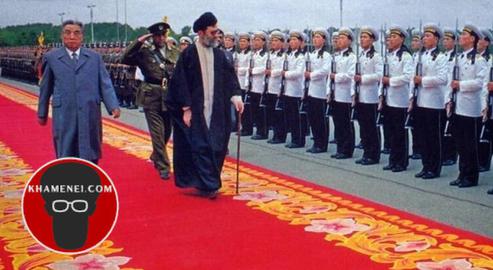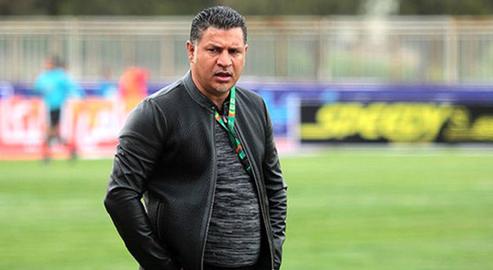Khamenei.com is a review of Ayatollah Ali Khamenei’s 31-year record as Supreme Leader of the Islamic Republic. Khamenei is one of the world’s most secretive and unknown leaders. Details on his personal life are scant and, except for his son Mojtaba, whose name has been in Iran’s news only in recent years, media outlets have seldom published any reports or photographs of his family.
But the mystery does not only surround his personal and family life. Now, three decades after he became the most powerful individual in the Islamic Republic, videos have come to light that reveal his election as Supreme Leader by Iran’s Assembly of Experts was meant to be a temporary measure.
Business groups and economic institutions under the control of the Supreme Leader are as secretive as their master. The financial dealings, profits and losses of these bodies are all secrets, and their operations have never been transparent. The Supreme Leader refuses to act transparently in politics too and has shunned taking direct responsibility whenever possible.
IranWire’s new Khamenei.com series of reports seeks to untangle the mystery of Ayatollah Ali Khamenei.
Ayatollah Ali Khamenei’s last foreign trip as president of Iran was to China and North Korea, just a month before the death of Ayatollah Ruhollah Khomeini, founder of the Islamic Republic, in June 1989. Iranian officials since mythologized these visits and see them as examples of successful Iranian diplomacy in the world.
Perhaps we can see in these visits to Beijing and Pyongyang the first glance in a new perspective on Iranian foreign policy that Khamenei later called “looking east.” In an early 2018 public speech, Khamenei, who was by that time Supreme Leader, spoke of his new “looking east” doctrine as a strategic pivot in Iran’s foreign policy.
In 1989, at the first meeting of his cabinet after his six-day trip, then-president Khamenei described his achievements during the Beijing and Pyongyang visits. “Our past historical relations,” he said, “our similar ways of fighting and the successful experiences in our country and in these two countries are an untapped opportunity that would bear fruit if we continue such visits. Our relations must not remain limited to the areas of communication and industrial, technological and scientific exchanges.”
He also reiterated the need to expand relations between China and Iran in 1991 when the Chinese Premier Li Peng visited him in Tehran.
But a long time has passed and many things have happened inside Iran and to its foreign relations since Khamenei first looked east. Unlike Iran’s relations with Russia, Iran-China relations were mostly focused on economic cooperation.
The first important Iran-China economic deal came during the 1980-1988 war between Iran and Iraq. China sold weapons to Iran, especially medium-range and short-range missiles; although, at the same time, China provided four times as much weaponry to Saddam Hussein’s Iraq.
Soon after Khamenei became Supreme Leader, in 1989, and when Ali Akbar Hashemi Rafsanjani succeeded him as president, bilateral visits by Iranian and Chinese officials increased, including a visit to China in the fall of 1990 by Mir-Hossein Mousavi, a former prime minister who was then an advisor to the president. This was when the first Gulf War was driving Iraq out of Kuwait.
Hashemi Rafsanjani later said that, during this visit, the Chinese premier told Mousavi that the situation in the Middle East was favorable to both Iran and China and asked Iran to encourage Iraq to resist the US. This was also the juncture when a number of joint economic projects between Iran and China started, including the building of factories and power plants.
Continuous confrontation in recent decades between the Iran and the West, especially the US, has played a prominent role in Iran’s gravitation towards China and Russia. In fact, with the range of US and other western sanctions imposed on Iran, this has not been a choice but a necessity.
A review of Iran’s trade relations with China and Russia, between 2009 and 2019, shows significant growth in the share of these two countries in Iran’s foreign trade. For instance, in 2009 China was Iran’s second trading partner after United Arab Emirates; but by 2014, it had overtaken the UAE to become the main trading partner. The value of the imports from China rose from $4.8 billion in 2009 to $10.3 in 2018, an increase of over 113 percent. On average, between 2012 and 2019, one fourth of all Iranian imports came from China.
In Search of Friends in High Places
During these years, resolutions on Iran were repeatedly brought before the UN Security Council; this was another reason for Khamenei to look east, to find friends among the Security Council’s permanent members. (But did not stop China and Russia from voting against Iran in all Security Council resolutions concerning Iran’s nuclear program.)
And yet a new chapter opened in January 2016 when, after the signing of the nuclear agreement or JCPOA (the Joint Comprehensive Plan of Action), Xi Jinping, China’s leader, visited Iran at the head of a large diplomatic and economic delegation. In the course of this visit Iran and China signed 17 accords, including nuclear cooperation to rebuild the Arak nuclear reactor, and plans for Iran to join China’s new “Belt and Road” trading and infrastructure initiative.
But when the President Donald Trump withdrew the US from the nuclear agreement and reimposed sanctions, the agreement for cooperation fell apart and the Chinese even left South Azadegan Oil Field in Khuzestan. This was not the first time China had behaved this way. Twenty-three years earlier, China had stopped cooperating with Iran in its nuclear project in Isfahan to end their own US sanctions.
But now, in 2020, the “new chapter” that was heralded years ago has been reopened. On June 24, 2020, China and Iran signed a 25-year “Comprehensive Strategic Partnership” on economic agreements and many other forms of cooperation.
Criticism of the agreement crew until it was revealed that the agreement had actually taken shape in 2016 when the leaders of the two countries had met in Tehran. It was an unprecedented accord after the 1979 Islamic Revolution, and some called it a “colonial” agreement, in which Iran gave to China far more than it received. Some analysts, however, believe that there is zero chance that this agreement will be finalized and carried out.
Khamenei’s insistence on looking east, and China’s ambitious plan to build a new Silk Road through the Belt and Road project, have coincided to create a situation which is bound to have lasting repercussions in Iran-China relations. And since China has the upper hand, many Iranians are extremely worried about the consequences of the agreement between the two countries.
Also in the series:
Khamenei’s Systematic Terrorism Abroad, 4 October 2020
How Big Is Khamenei’s Economic Empire?, 27 September 2020
Nuclear Confrontation, Khamenei’s Gift to Iran, 19 September 2020
The Overnight Ayatollah: Khamenei's Fight to Become a Spiritual Leader, 16 September 2020
Ruhollah Khomeini and Ali Khamenei: An Ayatollah and his Acolyte, 14 September 2020
How Did Khamenei Become Supreme Leader?, 11 September 2020




























comments